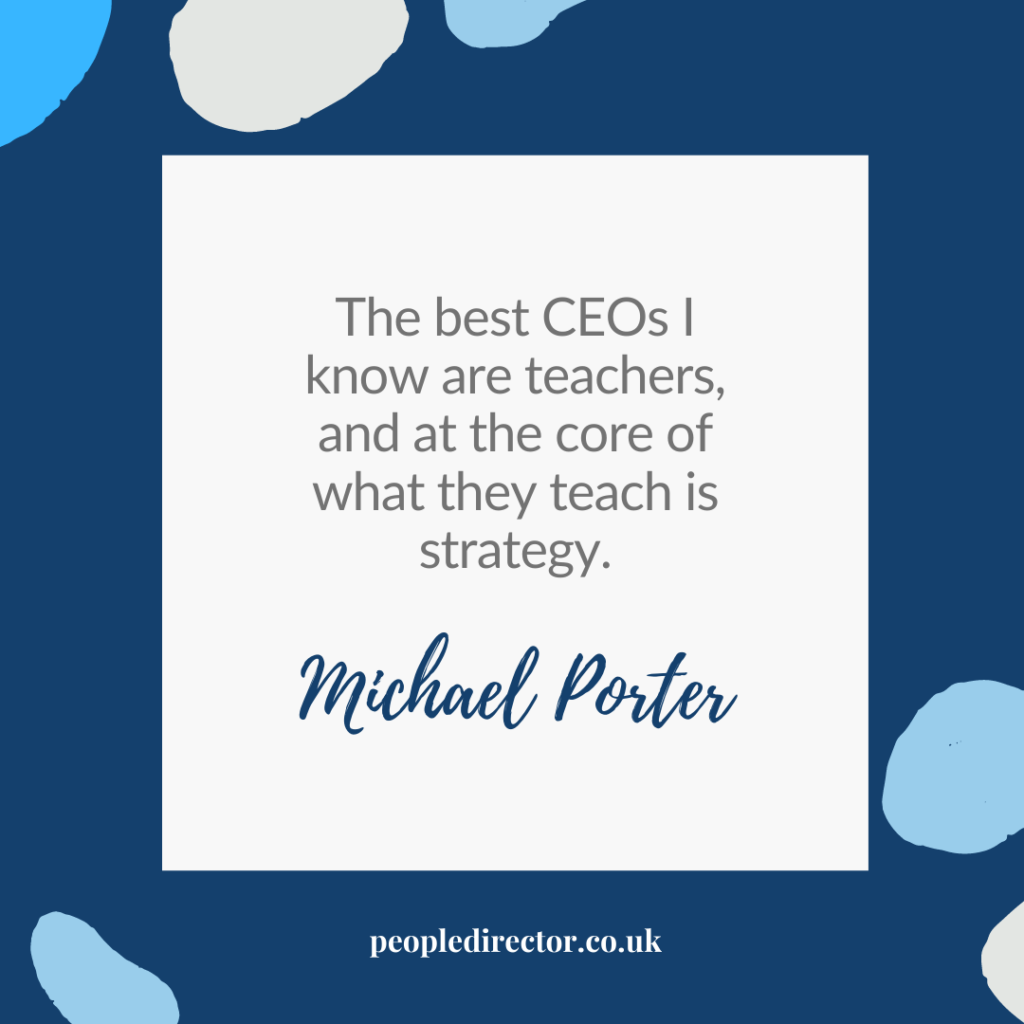
The guest on our Blog is Larry Doiron, corporate trainer and instructional design director from the USA. Our CEO, Anna Hayhurst, talked with Larry about a multitude of topics including the challenges of organisations to develop leadership that is capable to lead out of the current crisis and to create a competitive advantage in a fast changing technology-driven world.
Anna: Leadership development is often considered too costly especially during economic crisis. Since the start of the COVID-19 pandemic many businesses slashed their training budgets down and a significant number of in-house learning and development specialists lost their jobs. While this may indicate reduced investing, the real challenge for organisations is to develop stronger skills among their leadership so that the business can swiftly recover from the crisis.
How can organisations balance the need for continual leadership development and cost saving in these uncertain times?
Larry: What does traditional leadership development look like? Two or three-day instructor led training where the executives go off site and have keynotes or presenters talk about the latest and greatest in what it takes to develop leaders. There are usually breakout sessions and at the end of the session everybody fills out evaluations. With the current situation, we are seeing a huge transition to live streaming or VILT or even podcasts for rolling out various training scenarios. The problem is how effective they are.
Anna: The current crisis made many organisations rethink and change the way of doing business, managing performance, introducing new systems and tools and embracing the new digital technologies. Organisational change has become a necessity along with the need to develop new sets of skills for the new age.
What are the key challenges for the transformation of the L&D function today?
Larry: One of the biggest challenges for the L&D function is to adapt to the changing environment and how people are consuming training today. One of the other challenges is utilizing a learning management system (LMS) for pushing out learning versus a learning experience platform (LXP) that creates more engaging learners. This platform fosters a much more robust experience in self directed learning as well as peer to peer learning. The learner can choose who they want for a coach which could also be their manager or trainer. There is also a shift to more social learning that L&D departments are adapting to.
Anna: Many companies complain that they see low or no return on their L&D investments. I have been designing and delivering learning and development for 30 years, and it seems that the capacity of organisations to address this challenge is still underdeveloped.
What can help to keep L&D in line with the organisational needs?
Larry: How are they measuring the return on their investment? Is it the traditional report from our LMS that tells how many people have clicked on the course, how many have taken the assessment, how they ranked in sales after going through training and the list goes on? Or, are they measuring actual behaviour that is changed as a result of the material that was consumed in an ongoing learning plan instead of a one-time event? Invest in Edutainment – Education and Entertainment. Produce quality material. Invest in a training department that looks like a television studio. There are some incredible virtual reality software programmes that create cost effective virtual TV sets. Invest in developing managers as coaches and mentors for their teams. L&D also needs to make sure that their mission lines up with the organisational goals and how they will strategically impact those goals. They need to be viewed as a valued business partner that is an investment and not an expense.
Anna: Many agree that the emerging trends in L&D are the user-generated content (UGC) and content creation for talent development. The challenge is to give employees self-paced and self-directed learning so that they can take part in their own professional development.
What should a well designed and effective learning and development system offer to learners to add value to the organisation?
Larry: This is a great question because it will allow us to look at best in class practices for the designing of an effective learning and development process to help the learners really add value to the organisation. Are the learners involved in their developmental process? Are the managers involved in their developmental process? Is there a platform that they can create their learning plans, have peer to peer learning opportunities and be able to pick their coach or mentor to help them along that journey? What about a platform and a process that is even more than a learning experience platform (LXP) to its evolution thanks to Josh Bersin in his research into Capability Academies?
One of the most cutting edge Leadership Development models to come along is from Cy Wakeman and her Reality-Based Leadership training that transforms the traditional leadership training paradigm. Another component for a well-designed L&D is to have a rock-solid platform skill development process.
Finally, the ‘3 Rules of Management 101’ is to know your people, know your people and know your people. Management 201 is to know your people better. But how many leaders have been trained to really know their people? How many have been given the soft skill training to have demonstrable interpersonal relationship skills as well as the ability to display social emotional intelligence in the communication process with their peers and employees?
Anna: Josh Bersin set a new paradigm called “Learning in the Flow of Work” that enables learning “as needed” through existing tools and platforms. I was involved recently in delivering a similar learning and development solution for a client company to promote flexible learning whenever their employees have an opportunity to learn. While at a first glance this might sound simple, it required a robust transformation of the traditional L&D system and use of new technologies.
What is your experience with this type of L&D transformation? Please, tell us more about the key success factors.
Larry: The work I did with the Oasis University was very cutting edge and ahead of its time by creating a learning environment that provided just in time training for a national sales team. This learning process was created from the very first day a sales rep was on board and encompassed their first five weeks with developmental plans and activities that they had to accomplish with the help of their manager. The entire curriculum was custom built using subject matter experts within the organisation. The majority of the training was video based in micro learning bursts from 3 to 7 minutes.
There was also the utilisation of live streaming training sessions weekly featuring some of the best talent around the country. We would also put on panel discussions with some of the top sales reps and their managers talking about the sales process. Everything that was produced had to pass the “So What!” test. If it was not relevant for that moment for the person consuming it, then it was just feature dumping. We also provided coaching for the sales managers to have relevant weekly sales meeting content as well as job aids to help them with their pre-call planning, strategic coaching as well as to being able to assess the skills that the sales rep used during the sales call.
Another component provided peer to peer learning as well as a blog site for some of the top talent to post their experiences and processes. The last L&D component we launched was an asynchronous video process that allowed sales reps to video themselves given a very specific scenario to submit it to their managers for them to assess and coach on.
Anna: That is a good example about how learning and development is changing and why its transformation is becoming a necessity.
How should organisations move from traditional training and self-directed learning into a L&D system that offers adaptive learning solutions?
Larry: I would recommend looking at Josh Bersin’s “The Next Step: Capability Academies”. It is an evolution from the traditional LMS to the learning experience platform. This model will dramatically transform the learning and development process and is one of the best in class models I have seen.
The focus of a traditional LMS was to push learning out. The focus of an LXP is to provide more self-directed learning where you have a very good interface for the learners to be able to dial into and create their own learning plans. Now we are seeing the evolution to a Capability Academy organised by functional area, led by subject matter experts and business leaders which also gets a lot of buy from the leadership team.
One of the most critical components is the mentoring and coaching by design. Assessments and capability models help determine the behaviours that have been changed as a result of the learning that’s been consumed or the learning experience that they have gone through. Managers are more involved in their development and can provide good feedback on their performance.
Today leadership is trained on the seven factors that go into job performance to ensure that they have engaged employees and are producing discretionary effort for the organisation.
Anna: It is wonderful that we end our conversation with the key factors of performance. Thank you, Larry.
To check how you are doing with leadership development and performance, download for free Larry’s ‘Seven Factors of Job Performance Checklist” at the following link.
The Seven Factors of Job Performance Checklist
Send download link to:

About Larry Doiron
Larry is a USA based expert in corporate training and instructional design. He is helping companies navigate through talent management, system migrations, systems training and process improvement for 26 years.


